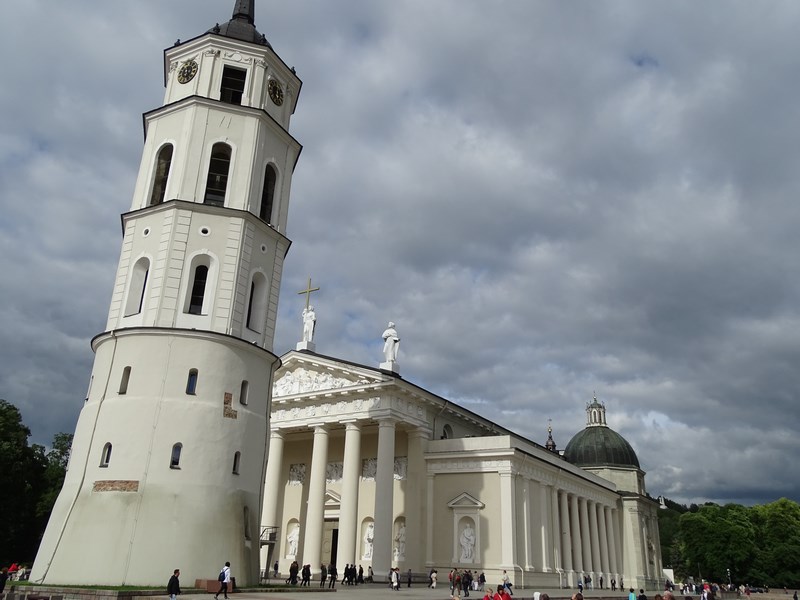Classic Japan between Nara and Kyoto. Episode 1 – Nara
What goes through your head when hearing the word “Japan”? Cities of the future, bullet-trains called “shinkansen”, technology, robots (or people acting like robots), Toyota and Kawasaki, Panasonic and Sony, cities with huge and shiny commercial signs passed through by thousands of pedestrians that cross the streets without clashes, just as the light turns green !
Well, yes, that’s true, that’s the way a good part of Japan looks like. But I will not stop upon these cities of the future now where the masses of Japanese people that stay at a queue to enter the subway, quietly, exactly in the place where in exactly two minutes and 13 seconds, the 14th subway door will open. Or maybe in the gigantic Pachinko halls, amusement centers where tired people from their jobs come to unwind by playing some sort of flipper, shooting electronic enemies or strumming silently on a guitar that they only hear on headphones, nor the cute Japanese that although they cannot speak any word of English except “OK” are eager to go with you by foot even 5 kilometers to get you at the hotel, even though all you wanted was to find a simple subway station exit to get you there.
No, today I will write about the classic, quiet, traditional Japan, the Japan of the ancient temples and the Buddhist temples, about the old capitals of Japan, Nara and Kyoto that preceded Tokyo as centers of imperial power. By moving the capital to Tokyo in 1868, Kyoto was saved from American bombing and from the forced post – war modernization. This doesn’t mean that Kyoto only means temples and parks, there is a modern area, but you can really lose yourself in a décor of a Japanese fairy tale without seeing any glass block
Kyoto and Nara are located in the Kansai region, very close to Osaka, the second city as size in Japan. Kyoto is an hour train ride away from Osaka and Nara at about 40 minutes. And the Japanese trains reach perfection in what concerns cleanliness, order and punctuality. The only discomfort can be caused by the ones sleeping on the train – there is, apparently, a great sleep deprivation in this work – obsessed nation…all of them are sleeping on trains, metro, when ever they find a free moment, even at lunch time between first and second course!
Once in Nara, going out of the underground train station (the size of the land is a bit small in Japan for the 125 million living souls, so whatever can fit underground will surely go under ground), you get all whiny and think to yourself …hmmm…blocks and streets again? All you need to do is to take a couple of steps and at once, you see a deer in a garden. You run, take pictures, try to touch it…Wow, a deer, how cool is this…but all you need to do is cross the street and you see yourself surrounded by stags and deer…Wow! And you reach for your guide book. And you find out the mystery …the tourist – historic area of Nara is inhabited by 1200 deer and stags, holy animals since pre-Buddhist time period when these creatures were considered messengers of gods (hmm…I’ve seen statues of stylized deer figurines on the Buddhist temples in Nepal and Tibet, now I see the connection!) and today this colony of cornuted enjoys the statute of national Thesaurus. If the Japanese are peaceful, civilized and kind people that wouldn’t harm you with a flower, oh well, their national thesaurus’ are extremely aggressive. You have barely spent a hundred yen in order to buy some “deer biscuits” – some sort of crackers and you find yourself surrounded by deers and get your behind pierced by stags…As if they weren’t fed thousands of crackers daily from the tourists, like they would be completely starving…Luckily the Nara deer are short (like the Japanese as well), not as great as our Carpathian stags.
Once out of the man- to-deer clinch, with some deer crackers lighter, you head on a street that’s full of souvenirs towards the park that shelters the temples of this city. By far, the most important complex is Todai-ji Nandai-mon, the major temple in Nara in the middle of which lies the incredible hall Daibutsu-den, the largest wooden building in the world, resisting since 1709 after it replaced a much bigger version. The major attraction in this gigantic hall is in an equal manner – the statue of the Great Cosmic Buddha – Daibutsu, one of the largest Buddha statues in the world.
After being stunned in front of the great Buddha you cannot but smile at the sight of tens of Japanese trying to squeeze themselves through a hole in a wooden column, behind the statue, in order to reach illumination. And not a few times, the SOS service is needed because some illumination wishers, not as supple, stay stuck in the pole…Personally, I missed the possibility of Illumination, but Andreea Raducan, the Romanian Olympic champion took another step towards Nirvana by crossing the hole, obviously with some hand pulling…
And while you cannot but complete this mystique experience at a kiosk located right in the huge hall you can buy charms to protect you while driving a car, it protects your health (at the same price you can get a 2 for 1 charm – for health and long life), it brings you victory, or as simple as that makes various wishes come true…All this for 400 Yen (2,44 euros)! Now that’s a bargain…
Pictures of Nara:
Me and the deer from Nara
Andreea measuring the deer
Entrance at Todai-ji temple
The great Buddha
Daibutsu













